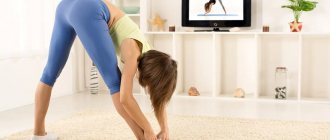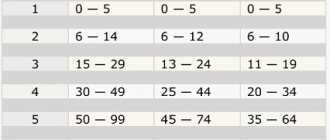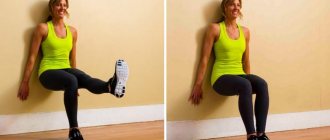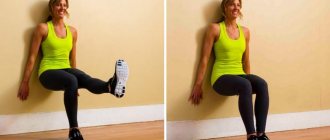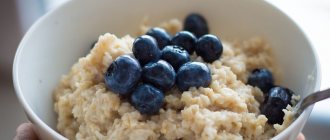Squats for girls are a useful exercise, because by doing it you can use almost all the muscles of the lower body. There are a huge variety of techniques for performing squats, and the exercises can also be performed with your own weight or with additional weights.
100 squats a day. Photos before and after
Squats are practiced not only to quickly lose weight, but also to increase endurance, gain muscle mass and improve the condition of blood vessels and the spine.
100 squats a day in 2.5 minutes. and within a month the results will be obvious, but it is only important to follow the rules for their implementation.
100 squats a day. Photos before and after
Rules and features
100 squats will be beneficial if done at a standard pace. They are performed like this: 10 squats in 15 seconds, which means that 100 squats will be completed in 2.5 minutes a day.
In order for the exercise to really bring benefits and the desired result, you need to follow some recommendations:
- Mainly the legs and buttocks work, but you also need to take care of the abdominal and back muscles;
- You should perform squats 10 times, with a short break between them, but no more than 2 minutes.
100 squats a day will help get your buttocks and thighs in shape.
If you follow all the rules for doing the exercises, you can get the maximum benefit from them:
- strengthen the muscles of the core and hips;
- significantly improve posture;
- helps build muscle mass if you additionally use weights;
- almost all the muscles of the lower body work;
- the load on the blood vessels and heart is minimal;
- increases the body's endurance;
- improve coordination of movements.
Squats are included in physical education lessons at school, because they help the body to be resilient and ready for any load. But they will benefit not only children and adolescents; they are also indicated for older people, because they help maintain vigor and activity, improve the functions of the heart and blood vessels.
Squats will bring maximum benefit at any age if you strictly follow a few basic rules.
Rules for practicing allow you to achieve results much faster:
| Execution Rules | Peculiarities |
| Warm-up is required | Be sure to do a warm-up, which includes bending and straightening your knees and rotating your feet. By warming up, you can reduce the risk of injury, and your muscles will become more flexible. |
| Choosing the optimal squat mode | For beginners, it is better to perform 10 squats in 5 approaches. When the muscles are ready for serious loads, you can move on to 2 sets of 50 times. |
| Correct body position | Your feet should be shoulder-width apart, and your heels should not be lifted off the floor while performing a squat. Hands on the belt or extended forward. The back is straight. Squat so that your thighs are parallel to the floor. It is important to monitor your breathing: lower your body as you inhale, and lift it as you exhale. The knees should be turned inward and not extend beyond the line of the toes. |
| No sudden movements | To avoid causing injury to the knee joints, you should not squat sharply. The exercise is performed smoothly and accurately. If everything is done correctly, the tension is felt in the back of the lower leg. |
| Weights | With their help, you can increase your own weight, which means that the load on the muscles will be much greater. |
| Squat time | To solve this problem, you need to choose the right time to perform squats. So, for example, if you need to get rid of extra pounds, then it is better to do squats in the morning, and if you need to increase mass, then it is better to do it in the evening. |
| Don't overdo it | You should not immediately test the strength of your knee joints on the first day and perform all 100 squats. It is better to start adding load gradually. |
2. Working weight
Bodybuilders, frankly, don’t care how much you weigh as long as your legs grow. Of course, everyone wants to lift more, but to hypertrophy a muscle group you need to direct the load to it. Therefore, you take the weight so that you can do all the planned repetitions with the correct technique. It matters more how you lift, not how much. Slow execution at a 3-1-X-1 tempo (not yet clear, but see next point) stimulates muscle growth even without half a ton on the bar.
In powerlifting, it's exactly the opposite. You don't think about isolating a muscle for hypertrophy. You need to go down to an acceptable depth and get back up - with maximum weight.
Benefits of squats
Squats help strengthen the entire body. When performing this particular exercise, almost all the muscles of the lower body actively work. If you periodically change your technique, you can pump up the muscles in the buttocks, thighs, and lower legs. A decent load is also aimed at the abdominal and lower back muscles.
Squats help strengthen the tendons and joints in the knees, ankles and hips. They are recommended for use during the recovery period after a sports injury, but warm-up is mandatory and strict control over the load is important.
Squats are recommended for all women at any age, the only exception being an absolute contraindication, because they help:
- the muscles do not atrophy and be prepared for serious loads;
- improve blood circulation;
- speed up metabolic processes;
- improve the condition of blood vessels and skin;
- adjust body contour;
- normalize the functions of the immune and digestive systems;
- improve posture;
- strengthen tendons and ligaments.
6. Body tilt
When you want to work your leg muscles, you try to bend over as little as possible. The closer the body is to a vertical position, the greater the load on the legs. The greater the inclination, the more your back works.
This is why front squats develop the quadriceps so effectively - the body is vertical and the legs work to their full potential. Among lifters, I have seen a variety of options and degrees of inclination, it depends on the individual. The main thing is to lower the pelvis to the desired depth, and everyone chooses the position of the body that is most convenient for themselves.
Contraindications and possible harm
100 squats a day (results can be seen within a few days) are absolutely contraindicated for women who have a history of the following pathologies and conditions:
- recent injuries;
- an inflammatory process is observed in the muscles;
- pathologies affecting the knee and hip joints;
- ailments of the musculoskeletal system;
- high pressure;
- severe obesity;
- scoliosis;
- radiculitis;
- heart and vascular diseases.
100 squats a day (results are only possible with regular exercise) are contraindicated for women and girls during pregnancy, menstruation, high body temperature, and acute periods of various pathologies.
8. Range of motion
In terms of pumping, maximum amplitude is useful for you, so it’s better to learn how to do full squats. Too often we see in the gyms people who do not even go as far as parallel, but are extremely proud of their records. But bending your legs slightly is not a squat.
How deep should you go? As deep as you can without experiencing pain or discomfort. You can add other leg exercises (lunges, hack squats, leg extensions, etc.) to add stress to specific areas, but it's best to build your bodybuilding program on the foundation of the full squat.
But in powerlifting, you only have to go as far as the judges will count you. Sometimes the thigh is almost parallel to the floor, sometimes it is clearly lower. If in training you only sat down to parallel, and the judge wants to see a deeper squat, then you, of course, can go lower, but then you are unlikely to be able to get up.
Of course, in strength training, you may need to squat at different depths to target areas that you find difficult to overcome. If you are weak at the bottom, then do, for example, a squat with a pause at the bottom. If you're struggling in the middle of the movement, you can try heavier partial squats to get stronger in that area.
Week schedule
100 squats a day (the results are expressed not only in getting rid of extra pounds) will benefit not only your figure, but the entire body as a whole, the main thing is to properly develop a training program. To diversify your workout or make it more productive, you can do 100 squats, but not in one technique, but alternate them.
For example, a weekly schedule for a newbie might look like this:
- Monday. Perform 100 regular squats, but not immediately, but 10 every 2 hours. You need to let the muscles get used to the load.
- Tuesday. Perform 100 regular squats, but 20 at a time and at intervals every 30-60 minutes.
- Wednesday. Perform 30 classic squats in the morning, 35 plie squats in the afternoon, and another 35 classic squats in the evening.
- Thursday. In the morning, 50 squats, but 10 each in different techniques, for example, classic, break 30 seconds, plie - break 30 seconds, break against the wall, sumo - break and with jumping. In the evening it is worth repeating all 5 approaches 10 times with a break of 30 seconds. between approaches.
- Friday. You can repeat the same pattern as on Thursday. You shouldn’t try too hard right away, otherwise your muscles will quickly get tired and hurt, which ultimately won’t allow you to continue doing the exercises every day and all your efforts will be in vain.
- Saturday. You can start doing 100 squats: 10 sets of 10 times, alternating exercises and maintaining an interval of 30 seconds. between approaches. So, initially do 10 classic squats, then alternately: plie, leg raise, sumo, regular, sideways, jumping, pistol, against the wall and at the end 10 regular ones.
- Sunday. Repeat everything as on Saturday and then training should go like this: 10 sets of 10 times with breaks of 30 seconds.
For beginners, it is advisable to start training with a simple warm-up, which will help prepare the muscles for stress and prevent injuries. Results can be achieved quickly if the technique of each exercise is performed perfectly.
1. Number of repetitions
For hypertrophy, an average of 8-12 repetitions works well. However, high-repetition sets (25-50) also help gain muscle volume. And that's why:
- Different ratios of muscle fiber types in the legs. Since people have different ratios of fast-twitch and slow-twitch fibers, those whose legs do not grow from the average rep range can gain mass by longer sets in terms of time and number of repetitions. In general, bodybuilders do all variations - 5 -10 - 25 - 50 repetitions in order to stimulate all fibers to the maximum: some in one workout, others alternating ranges in monthly cycles. ( Therefore, even approaches with a large number of repetitions (25-50) can add mass if you do not control calories - greetings from Zozhnik to girls who practice high repetitions )
- With a high number of repetitions, more blood is pumped into the legs - a pump never hurts.
- In addition, more growth hormone is produced - it helps with muscle gain and fat loss.
If you look at the programs of powerlifters, weightlifters and other strength athletes, they usually prescribe from 1 to 5 repetitions per set. Five repetitions is a classic canon for developing strength and adding useful muscles. When you want a record without increasing size (you don't want to move into the next category), stay in the 1-3 rep range.
When to expect the effect
100 squats a day, after 2-3 weeks of regular training, helps the body work more smoothly. First of all, the work of the heart muscles significantly improves, the functions of the nervous and respiratory systems improve.
And after 6-8 weeks of regular daily exercise, you will notice how the figure acquires clearer outlines. The contours and reliefs in the waist and hips become clearer, and the legs become more elastic. You can also notice significant changes in the abdominal muscles, which become denser and more noticeable.
Many women who have not exercised before and often suffered from sprains and bruises note that after 4 weeks of daily squats they completely forgot about their complaints.
Squats are a simple exercise with a wide variety of variations that can make every workout not only productive, but also less exhausting. By squatting 100 times a day, spending no more than 5 minutes on it, you can not only quickly remove extra pounds, but also improve the functioning of all body systems, strengthen tendons and joints.
5. Neck position
In the back squat, the bar can be positioned higher or lower. In its lowest position it is located near the shoulder blades, in its highest position it is on the upper part of the trapezius.
Typically bodybuilders squat with a high bar position because it places the center of gravity over the hips.
Powerlifters do different variations of the squat, but the vast majority prefer a low bar position to shorten the range of motion and transfer the load to the entire pelvic girdle, not just the quads.
How to squat with a barbell for older people
For older athletes, there are special safety measures: long warm-up and strict adherence to the squat technique.
Exercise under the supervision of a trainer at least for the first time.
Mistakes older athletes make that can lead to injury:
- no deflection in the spinal column, round back;
- carpal hall;
- no tension in the press;
- knees brought inward;
- body weight is transferred to the toes, heels are lifted off the floor;
- tiny distance between the feet;
- straightening through the back, and not through straightening the knees.
If discomfort and pain occur during training, you should take an anti-inflammatory drug and consult a doctor. It is also advisable to refrain from physical activity for about a week.
IPA Bench Press Standards
In equipment
Men
| Weight category | ELITE | MSMK | MS | KMS | I | II | III |
| 52 | 245.0 | 215.0 | 190.0 | 167.5 | 150.0 | 132.5 | 117.5 |
| 56 | 267.5 | 232.5 | 207.5 | 182.5 | 162.5 | 142.5 | 127.5 |
| 60 | 287.5 | 250.0 | 222.5 | 197.5 | 175.0 | 155.0 | 135.0 |
| 67.5 | 320.0 | 280.0 | 250.0 | 220.0 | 195.0 | 172.5 | 152.5 |
| 75 | 350.0 | 305.0 | 272.5 | 240.0 | 212.5 | 187.5 | 165.0 |
| 82.5 | 372.5 | 325.0 | 290.0 | 257.5 | 227.5 | 200.0 | 177.5 |
| 90 | 395.0 | 345.0 | 307.5 | 270.0 | 240.0 | 212.5 | 187.5 |
| 100 | 415.0 | 362.5 | 325.0 | 285.0 | 252.5 | 225.0 | 197.5 |
| 110 | 432.5 | 380.0 | 337.5 | 297.5 | 265.0 | 232.5 | 207.5 |
| 125 | 455.0 | 397.5 | 355.0 | 312.5 | 275.0 | 245.0 | 215.0 |
| 140 | 470.0 | 412.5 | 365.0 | 322.5 | 285.0 | 252.5 | 222.5 |
| 140+ | 480.0 | 422.5 | 377.5 | 332.5 | 295.0 | 260.0 | 230.0 |
Women
| Weight category | ELITE | MSMK | MS | KMS | I | II | III |
| 44 | 155.0 | 140.0 | 125.0 | 110.0 | 97.5 | 85.0 | 75.0 |
| 48 | 172.5 | 155.0 | 137.5 | 120.0 | 107.5 | 95.0 | 85.0 |
| 52 | 185.0 | 167.5 | 150.0 | 132.5 | 117.5 | 102.5 | 90.0 |
| 56 | 200.0 | 180.0 | 160.0 | 140.0 | 125.0 | 110.0 | 97.5 |
| 60 | 210.0 | 190.0 | 170.0 | 150.0 | 132.5 | 117.5 | 105.0 |
| 67.5 | 232.5 | 210.0 | 187.5 | 165.0 | 145.0 | 127.5 | 115.0 |
| 75 | 245.0 | 222.5 | 200.0 | 175.0 | 155.0 | 137.5 | 122.5 |
| 82.5 | 260.0 | 235.0 | 210.0 | 185.0 | 165.0 | 145.0 | 127.5 |
| 90 | 270.0 | 245.0 | 220.0 | 192.5 | 170.0 | 152.5 | 135.0 |
| 90+ | 280.0 | 260.0 | 232.5 | 205.0 | 182.5 | 160.0 | 142.5 |
Without equipment
Men
| Weight category | ELITE | MSMK | MS | KMS | I | II | III |
| 52 | 205.0 | 185.0 | 165.0 | 145.0 | 127.5 | 112.5 | 100.0 |
| 56 | 222.5 | 200.0 | 177.5 | 157.5 | 137.5 | 122.5 | 107.5 |
| 60 | 235.0 | 212.5 | 190.0 | 167.5 | 147.5 | 130.0 | 115.0 |
| 67.5 | 260.0 | 235.0 | 210.0 | 185.0 | 162.5 | 145.0 | 127.5 |
| 75 | 280.0 | 252.5 | 225.0 | 197.5 | 175.0 | 155.0 | 137.5 |
| 82.5 | 297.5 | 267.5 | 237.5 | 210.0 | 185.0 | 165.0 | 145.0 |
| 90 | 310.0 | 280.0 | 250.0 | 220.0 | 195.0 | 172.5 | 152.5 |
| 100 | 322.5 | 292.5 | 262.5 | 230.0 | 205.0 | 180.0 | 160.0 |
| 110 | 335.0 | 302.5 | 270.0 | 237.5 | 210.0 | 187.5 | 165.0 |
| 125 | 350.0 | 315.0 | 280.0 | 247.5 | 220.0 | 195.0 | 172.5 |
| 140 | 360.0 | 325.0 | 290.0 | 255.0 | 225.0 | 200.0 | 177.5 |
| 140+ | 365.0 | 332.5 | 297.5 | 262.5 | 232.5 | 205.0 | 180.0 |
Women
| Weight category | ELITE | MSMK | MS | KMS | I | II | III |
| 44 | 127.5 | 115.0 | 102.5 | 90.0 | 80.0 | 72.5 | 62.5 |
| 48 | 142.5 | 127.5 | 112.5 | 100.0 | 87.5 | 77.5 | 70.0 |
| 52 | 152.5 | 137.5 | 122.5 | 107.5 | 95.0 | 85.0 | 75.0 |
| 56 | 160.0 | 145.0 | 130.0 | 115.0 | 102.5 | 90.0 | 80.0 |
| 60 | 172.5 | 155.0 | 137.5 | 120.0 | 107.5 | 95.0 | 85.0 |
| 67.5 | 185.0 | 167.5 | 150.0 | 130.0 | 117.5 | 102.5 | 90.0 |
| 75 | 197.5 | 177.5 | 157.5 | 140.0 | 122.5 | 110.0 | 97.5 |
| 82.5 | 205.0 | 185.0 | 165.0 | 145.0 | 130.0 | 115.0 | 100.0 |
| 90 | 212.5 | 192.5 | 172.5 | 150.0 | 132.5 | 117.5 | 105.0 |
| 90+ | 220.0 | 202.5 | 180.0 | 157.5 | 140.0 | 125.0 | 110.0 |
Caution doesn't hurt
Like any other physical exercise, squats have a number of contraindications.
If you have already had problems with the spine, pain in the knees or hip joints, or have been diagnosed with a tendency to varicose veins, it is better to consult with your doctor before starting classes. Do not ignore your body’s signals; even the slightest pain if ignored for a long time can lead to serious consequences.
Since ancient times, man has strived for development, not only spiritual and intellectual, but also physical. The struggle for survival dictated its own laws, where physical strength played an important role. Various types of competitions took place back in the distant centuries BC. The history of the Olympic Games itself speaks to this.
Nowadays, and especially in recent years, the sport has acquired a kind of cult. Fitness clubs, yoga or Pilates classes, wrestling or dance sections are increasingly becoming meeting places for young people. Even the most ordinary school sports fields are no longer empty in anticipation of a new school day.
In cafes, you can increasingly hear friends talking about proper nutrition, recommended by a personal trainer. Such a transformation of society cannot but rejoice; a healthy lifestyle is boldly sweeping across our Motherland, attracting more and more supporters.
Take care of your health. Don't forget, the body, just like the mind, needs constant training. Squats are a great form of exercise!
AGPC/GPC Bench Press Standards
AGPC
Raw classic (squat WITH BANDAGES)
Men
| Weight category | Elite | MSMK | MS | KMS | I | II | III |
| 52 | 177,5 | 152,5 | 135 | 120 | 107,5 | 92,5 | 77,5 |
| 56 | 192,5 | 165 | 145 | 127,5 | 115 | 102,5 | 85 |
| 60 | 207,5 | 177,5 | 157,5 | 137,5 | 122,5 | 110 | 92,5 |
| 67,5 | 230 | 200 | 175 | 152,5 | 135 | 122,5 | 107,5 |
| 75 | 250 | 217,5 | 187,5 | 165 | 147,5 | 135 | 115 |
| 82,5 | 270 | 235 | 200 | 175 | 157,5 | 145 | 122,5 |
| 90 | 285 | 247,5 | 212,5 | 185 | 165 | 150 | 130 |
| 100 | 300 | 262,5 | 225 | 195 | 175 | 157,5 | 135 |
| 110 | 310 | 272,5 | 235 | 205 | 182,5 | 165 | 145 |
| 125 | 320 | 280 | 242,5 | 212,5 | 192,5 | 170 | 150 |
| 140 | 327,5 | 287,5 | 250 | 220 | 200 | 177,5 | 155 |
| 140+ | 335 | 295 | 255 | 225 | 205 | 182,5 | 157,5 |
Women
| Weight category | Elite | MSMK | MS | KMS | I | II | III |
| 44 | 117,5 | 105 | 87,5 | 75 | 65 | 57,5 | 52,5 |
| 48 | 127,5 | 112,5 | 95 | 82,5 | 72,5 | 62,5 | 57,5 |
| 52 | 135 | 120 | 100 | 87,5 | 77,5 | 67,5 | 60 |
| 56 | 142,5 | 127,5 | 107,5 | 92,5 | 82,5 | 72,5 | 65 |
| 60 | 150 | 135 | 115 | 97,5 | 87,5 | 77,5 | 67,5 |
| 67,5 | 165 | 147,5 | 125 | 105 | 95 | 82,5 | 72,5 |
| 75 | 177,5 | 160 | 135 | 112,5 | 100 | 90 | 77,5 |
| 82,5 | 190 | 170 | 145 | 120 | 107,5 | 95 | 80 |
| 90 | 200 | 177,5 | 152,5 | 127,5 | 112,5 | 100 | 85 |
| 90+ | 210 | 185 | 160 | 132,5 | 117,5 | 102,5 | 87,5 |
In equipment (without layer restrictions)
Men
| Weight category | Elite | MSMK | MS | KMS | I | II | III |
| 52 | 200 | 170 | 152,5 | 132,5 | 120 | 105 | 85 |
| 56 | 215 | 185 | 162,5 | 142,5 | 127,5 | 115 | 95 |
| 60 | 232,5 | 200 | 175 | 152,5 | 137,5 | 122,5 | 105 |
| 67,5 | 257,5 | 222,5 | 195 | 170 | 152,5 | 137,5 | 120 |
| 75 | 280 | 242,5 | 210 | 185 | 167,5 | 152,5 | 127,5 |
| 82,5 | 305 | 262,5 | 222,5 | 200 | 175 | 162,5 | 137,5 |
| 90 | 317,5 | 275 | 235 | 210 | 185 | 167,5 | 142,5 |
| 100 | 337,5 | 295 | 252,5 | 222,5 | 195 | 175 | 152,5 |
| 110 | 350 | 305 | 262,5 | 232,5 | 205 | 185 | 162,5 |
| 125 | 360 | 315 | 270 | 240 | 212,5 | 190 | 167,5 |
| 140 | 370 | 322,5 | 277,5 | 247,5 | 217,5 | 200 | 170 |
| 140+ | 377,5 | 330 | 285 | 252,5 | 222,5 | 205 | 175 |
Women
| Weight category | Elite | MSMK | MS | KMS | I | II | III |
| 44 | 130 | 115 | 97,5 | 82,5 | 72,5 | 62,5 | 57,5 |
| 48 | 140 | 125 | 105 | 90 | 80 | 70 | 62,5 |
| 52 | 147,5 | 132,5 | 110 | 97,5 | 85 | 75 | 65 |
| 56 | 157,5 | 140 | 117,5 | 102,5 | 90 | 80 | 72,5 |
| 60 | 165 | 147,5 | 127,5 | 107,5 | 97,5 | 85 | 75 |
| 67,5 | 182,5 | 162,5 | 137,5 | 115 | 105 | 90 | 80 |
| 75 | 195 | 175 | 147,5 | 125 | 110 | 100 | 85 |
| 82,5 | 210 | 187,5 | 160 | 132,5 | 117,5 | 105 | 87,5 |
| 90 | 220 | 195 | 167,5 | 140 | 125 | 110 | 92,5 |
| 90+ | 230 | 202,5 | 175 | 145 | 130 | 112,5 | 97,5 |
GPC
Raw classic (squat WITH BANDAGES)
Men
| Weight category | Elite | MSMK | MS | KMS | I | II | III |
| 52 | 215,0 | 187,5 | 165,0 | 150,0 | 125,0 | 112,5 | 102,5 |
| 56 | 232,5 | 210,0 | 180,0 | 160,0 | 132,5 | 122,5 | 107,5 |
| 60 | 245,0 | 225,0 | 195,0 | 165,0 | 145,0 | 127,5 | 112,5 |
| 67,5 | 272,5 | 247,5 | 212,5 | 180,0 | 155,0 | 142,5 | 122,5 |
| 75 | 297,5 | 267,5 | 225,0 | 192,5 | 165,0 | 152,5 | 135,0 |
| 82,5 | 302,5 | 285,0 | 240,0 | 207,5 | 180,0 | 160,0 | 142,5 |
| 90 | 327,5 | 297,5 | 252,5 | 212,5 | 190,0 | 165,0 | 147,5 |
| 100 | 340,0 | 310,0 | 265,0 | 220,0 | 200,0 | 175,0 | 157,5 |
| 110 | 352,5 | 322,5 | 272,5 | 232,5 | 205,0 | 182,5 | 162,5 |
| 125 | 367,5 | 332,5 | 285,0 | 242,5 | 215,0 | 190,0 | 167,5 |
| 140 | 377,5 | 342,5 | 295,0 | 250,0 | 222,5 | 195,0 | 170,0 |
| 140+ | 387,5 | 350,0 | 307,5 | 255,0 | 227,5 | 200,0 | 175,0 |
Women
| Weight category | Elite | MSMK | MS | KMS | I | II | III |
| 44 | 137,5 | 122,5 | 97,5 | 85,0 | 75,0 | 67,5 | 62,5 |
| 48 | 155,0 | 132,5 | 110,0 | 95,0 | 82,5 | 72,5 | 67,5 |
| 52 | 167,5 | 137,5 | 117,5 | 105,0 | 90,0 | 80,0 | 70,0 |
| 56 | 175,0 | 147,5 | 125,0 | 110,0 | 97,5 | 85,0 | 75,0 |
| 60 | 192,5 | 157,5 | 137,5 | 115,0 | 105,0 | 90,0 | 80,0 |
| 67,5 | 207,5 | 170,0 | 150,0 | 122,5 | 115,0 | 97,5 | 85,0 |
| 75 | 222,5 | 185,0 | 157,5 | 132,5 | 120,0 | 107,5 | 92,5 |
| 82,5 | 232,5 | 192,5 | 162,5 | 137,5 | 125,0 | 112,5 | 95,0 |
| 90 | 240,0 | 202,5 | 170,0 | 142,5 | 130,0 | 117,5 | 100,0 |
| 90+ | 250,0 | 212,5 | 177,5 | 152,5 | 135,0 | 120,0 | 105,0 |
In equipment (without layer restrictions)
Men
| Weight category | Elite | MSMK | MS | KMS | I | II | III |
| 52 | 240,0 | 210,0 | 180,0 | 155,0 | 145,0 | 127,5 | 115,0 |
| 56 | 265,0 | 222,5 | 195,0 | 167,5 | 155,0 | 135,0 | 125,0 |
| 60 | 270,0 | 230,0 | 207,5 | 175,0 | 162,5 | 145,0 | 130,0 |
| 67,5 | 292,5 | 262,5 | 227,5 | 200,0 | 175,0 | 157,5 | 135,0 |
| 75 | 335,0 | 285,0 | 245,0 | 225,0 | 192,5 | 170,0 | 145,0 |
| 82,5 | 350,0 | 302,5 | 260,0 | 232,5 | 205,0 | 180,0 | 162,5 |
| 90 | 355,0 | 315,0 | 270,0 | 245,0 | 217,5 | 192,5 | 170,0 |
| 100 | 365,0 | 332,5 | 285,0 | 250,0 | 227,5 | 202,5 | 177,5 |
| 110 | 387,5 | 342,5 | 295,0 | 267,5 | 240,0 | 210,0 | 187,5 |
| 125 | 412,5 | 357,5 | 312,5 | 292,5 | 252,5 | 225,0 | 195,0 |
| 140 | 417,5 | 365,0 | 322,5 | 297,5 | 260,0 | 227,5 | 202,5 |
| 140+ | 422,5 | 375,0 | 337,5 | 302,5 | 265,0 | 235,0 | 207,5 |
Women
| Weight category | Elite | MSMK | MS | KMS | I | II | III |
| 44 | 147,5 | 122,5 | 107,5 | 95,0 | 82,5 | 72,5 | 62,5 |
| 48 | 162,5 | 132,5 | 120,0 | 105,0 | 92,5 | 80,0 | 72,5 |
| 52 | 172,5 | 145,0 | 130,0 | 115,0 | 102,5 | 87,5 | 75,0 |
| 56 | 190,0 | 155,0 | 137,5 | 122,5 | 107,5 | 95,0 | 82,5 |
| 60 | 200,0 | 162,5 | 147,5 | 127,5 | 115,0 | 102,5 | 95,0 |
| 67,5 | 212,5 | 180,0 | 162,5 | 132,5 | 122,5 | 110,0 | 100,0 |
| 75 | 230,0 | 192,5 | 170,0 | 152,5 | 130,0 | 120,0 | 107,5 |
| 82,5 | 242,5 | 197,5 | 180,0 | 160,0 | 142,5 | 125,0 | 112,5 |
| 90 | 252,5 | 210,0 | 190,0 | 165,0 | 147,5 | 130,0 | 115,0 |
| 90+ | 262,5 | 220,0 | 200,0 | 175,0 | 157,5 | 137,5 | 120,0 |




